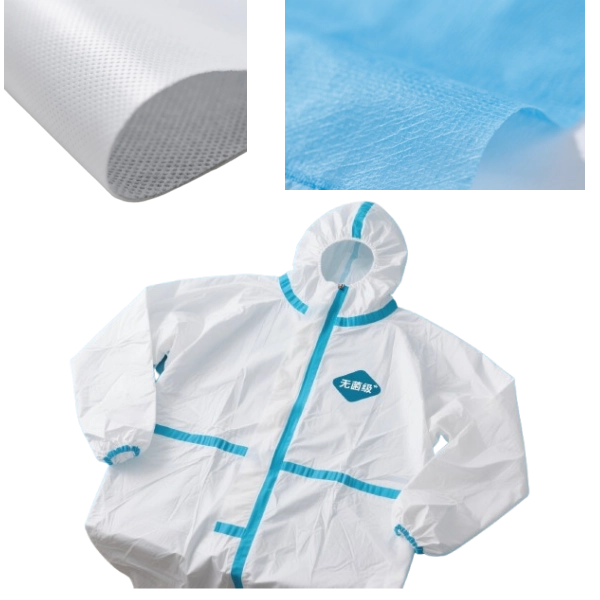ASTM F2878
Hypodermic Needle Puncture Test
Protective clothing plays a critical role in safeguarding workers in medical, pharmaceutical, and industrial environments. Among the most important performance factors is puncture resistance against hypodermic needles, especially where exposure risks are high. To address this, ASTM F2878 provides a standardized method to evaluate the puncture resistance of protective clothing materials using hypodermic needles of specified gauges.
Understanding ASTM F2878
ASTM F2878 – Standard Test Method for Protective Clothing Material Resistance to Hypodermic Needle Puncture – is designed to measure the force required for a needle to penetrate protective clothing materials.
Unlike other puncture tests that may use blunt or sharp probes, this method specifically employs hypodermic needles (21G, 25G, and 28G) to replicate real-world hazards in healthcare, emergency response, or laboratory work.
The test involves:
- Mounting a material specimen in a support fixture.
- Driving a hypodermic needle perpendicularly into the specimen at a controlled speed (500 mm/min).
- Recording the maximum force needed for the needle tip to fully puncture the material.
- Reporting the average of twelve replicates as the puncture resistance.
Protective Clothing Material Puncture Testing
Protective garments such as gloves, gowns, or coveralls must withstand puncture threats in clinical and industrial settings. ASTM F2878 specifically evaluates:
- Plastics, elastomeric films, and laminates
- Coated fabrics and textiles
- Leather or other flexible materials
This ensures that manufacturers can quantify and improve the puncture resistance for protective clothing against hypodermic needles. Unlike tear or burst strength tests, this method directly simulates sharp needle hazards, making it one of the most relevant protective clothing material puncture testing standards.

Hypodermic Needle Puncture Testing in Practice
In hypodermic needle puncture testing, different needle gauges are selected based on risk assessment. For example:
- 21G needle – larger diameter, requiring greater puncture force.
- 25G needle – intermediate testing condition.
- 28G needle – fine needle, often used in precision medical settings.
By testing across these gauges, laboratories can determine how well protective clothing resists varying needle sizes. This data is crucial for compliance, worker safety, and product development.
Significance of Puncture Resistance for Protective Clothing
01
Healthcare and laboratory safety
Ensuring gloves and gowns resist accidental needle punctures.
02
Pharmaceutical manufacturing
Protecting operators during drug production or vial handling.
03
Emergency response and law enforcement
Safeguarding against accidental exposure during fieldwork.
Choosing the Right Needle Puncture Test Equipment
Accurate results in ASTM F2878 testing depend on using a dedicated needle puncture tester with precise force measurement and controlled speed. The Cell Instruments NPT-01 Needle Puncture Tester is designed for this purpose.
Key advantages include:
- High precision with a 0.5% F.S. accuracy.
- Flexible test speeds (1–500 mm/min) to comply with standard requirements.
- Compatibility with multiple needle types and specimen jigs.
- PLC-controlled system with an intuitive 7-inch touchscreen.
- Built-in safety protections and automatic test return functions.
For laboratories, manufacturers, or quality control agencies, the NPT-01 offers reliable, repeatable, and standards-compliant hypodermic needle puncture testing, making it an essential instrument for ASTM F2878 applications.
Contact Us Get ASTM F2878 Testing Solution
ASTM F2878 provides a rigorous method to assess puncture resistance for protective clothing, ensuring that materials meet real-world safety demands. By replicating needle hazards with controlled testing, manufacturers and quality professionals can protect workers, reduce risks, and comply with international safety standards.
For reliable implementation, Cell Instruments’ NPT-01 Needle Puncture Tester offers the precision, flexibility, and compliance needed to meet ASTM F2878 requirements across medical, pharmaceutical, and industrial applications.
ASTM F2878 is a standard test method that measures the resistance of protective clothing materials to puncture by hypodermic needles. It is essential for ensuring the safety of materials used in environments where needle punctures are a risk, such as healthcare and pharmaceutical industries.
The puncture resistance is measured by mounting a material specimen and driving a hypodermic needle (21G, 25G, or 28G) perpendicularly into it at a constant speed of 500 mm/min. The maximum force required for the needle to penetrate the material is recorded and reported.
Materials tested under ASTM F2878 include plastics, elastomeric films, textiles, coated fabrics, laminates, and leather, which are commonly used for making protective clothing like gloves, gowns, and coveralls.
Hypodermic needle puncture testing is critical for industries where workers are exposed to risks from sharp objects like needles. By evaluating puncture resistance, it helps ensure that protective clothing can withstand accidental punctures, protecting workers from exposure to biological or chemical hazards.
The NPT-01 Needle Puncture Tester is designed for accurate and repeatable testing of puncture resistance, making it ideal for ASTM F2878 compliance. With features such as precise force measurement, adjustable test speed, and multiple needle types, the NPT-01 ensures reliable results for protective clothing manufacturers and quality control professionals


